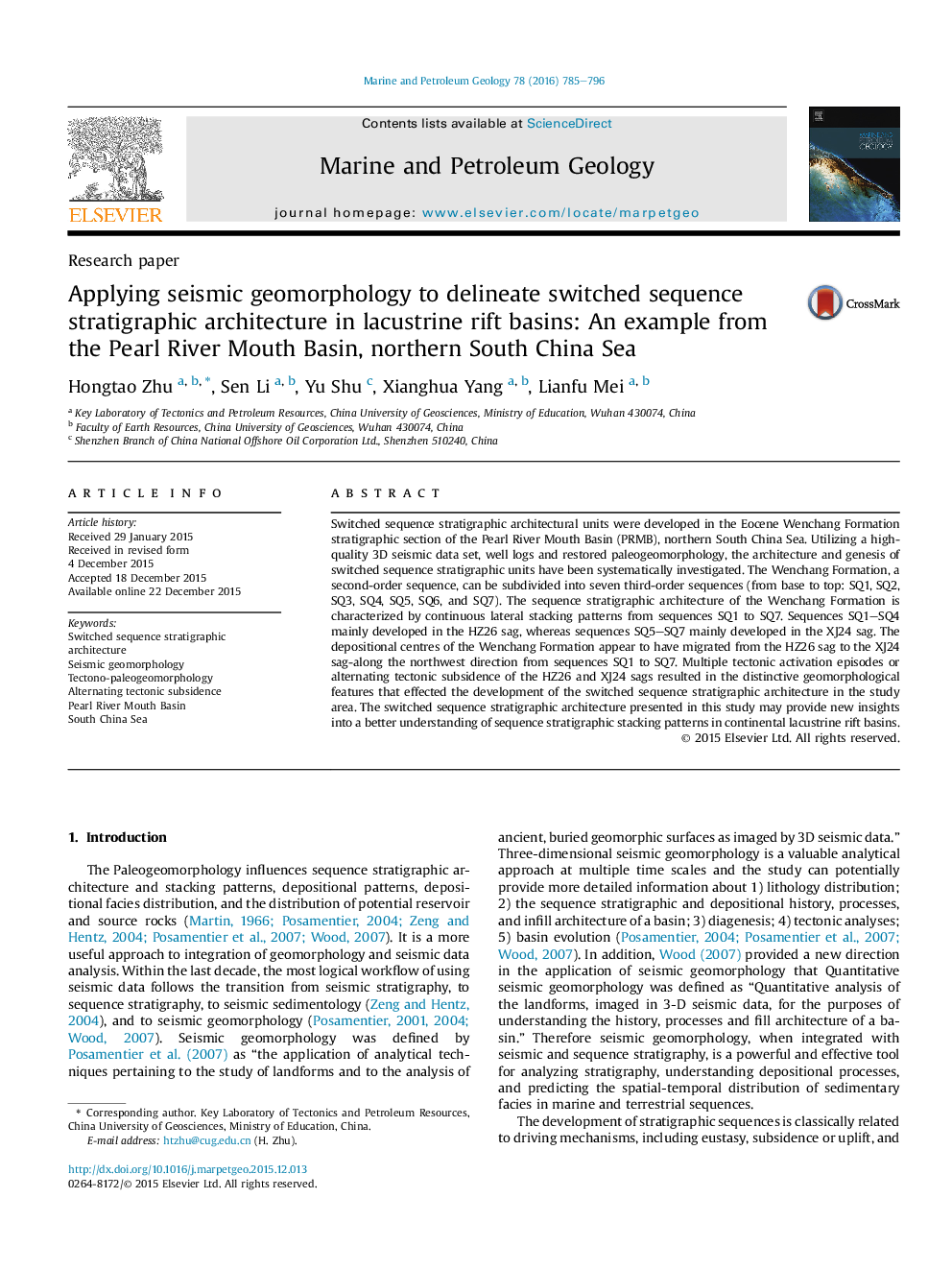| کد مقاله | کد نشریه | سال انتشار | مقاله انگلیسی | نسخه تمام متن |
|---|---|---|---|---|
| 6434445 | 1637149 | 2016 | 12 صفحه PDF | دانلود رایگان |
- Switched sequence stratigraphic architecture was presented in this study.
- Alternating tectonic subsidence resulted in the distinctive geomorphological features.
- The depositional centres appear to have migrated from the HZ26 sag to the XJ24 sag.
- Paleogeomorphology effected the development of the switched sequence stratigraphic architecture.
Switched sequence stratigraphic architectural units were developed in the Eocene Wenchang Formation stratigraphic section of the Pearl River Mouth Basin (PRMB), northern South China Sea. Utilizing a high-quality 3D seismic data set, well logs and restored paleogeomorphology, the architecture and genesis of switched sequence stratigraphic units have been systematically investigated. The Wenchang Formation, a second-order sequence, can be subdivided into seven third-order sequences (from base to top: SQ1, SQ2, SQ3, SQ4, SQ5, SQ6, and SQ7). The sequence stratigraphic architecture of the Wenchang Formation is characterized by continuous lateral stacking patterns from sequences SQ1 to SQ7. Sequences SQ1-SQ4 mainly developed in the HZ26 sag, whereas sequences SQ5-SQ7 mainly developed in the XJ24 sag. The depositional centres of the Wenchang Formation appear to have migrated from the HZ26 sag to the XJ24 sag-along the northwest direction from sequences SQ1 to SQ7. Multiple tectonic activation episodes or alternating tectonic subsidence of the HZ26 and XJ24 sags resulted in the distinctive geomorphological features that effected the development of the switched sequence stratigraphic architecture in the study area. The switched sequence stratigraphic architecture presented in this study may provide new insights into a better understanding of sequence stratigraphic stacking patterns in continental lacustrine rift basins.
Journal: Marine and Petroleum Geology - Volume 78, December 2016, Pages 785-796
